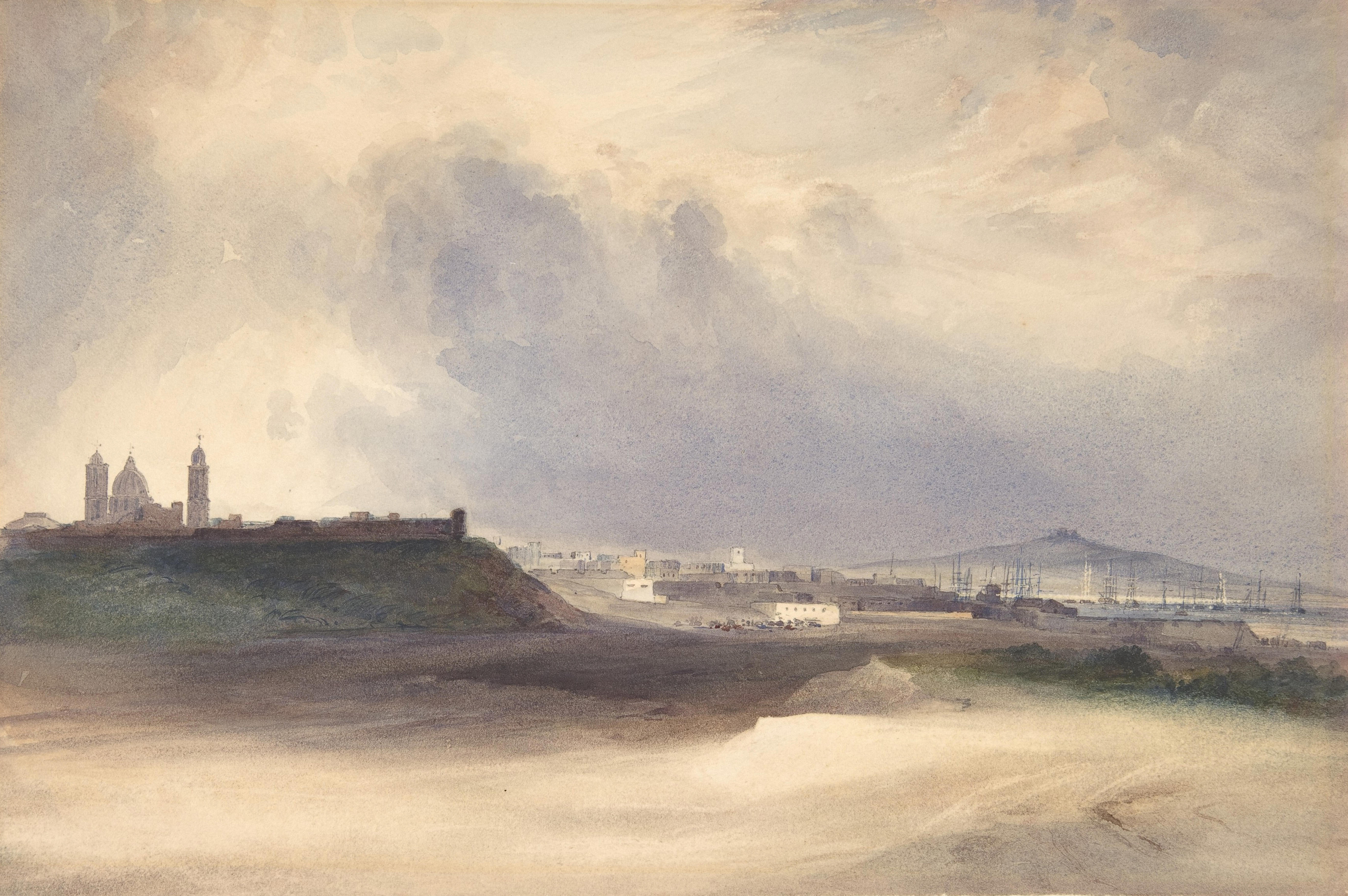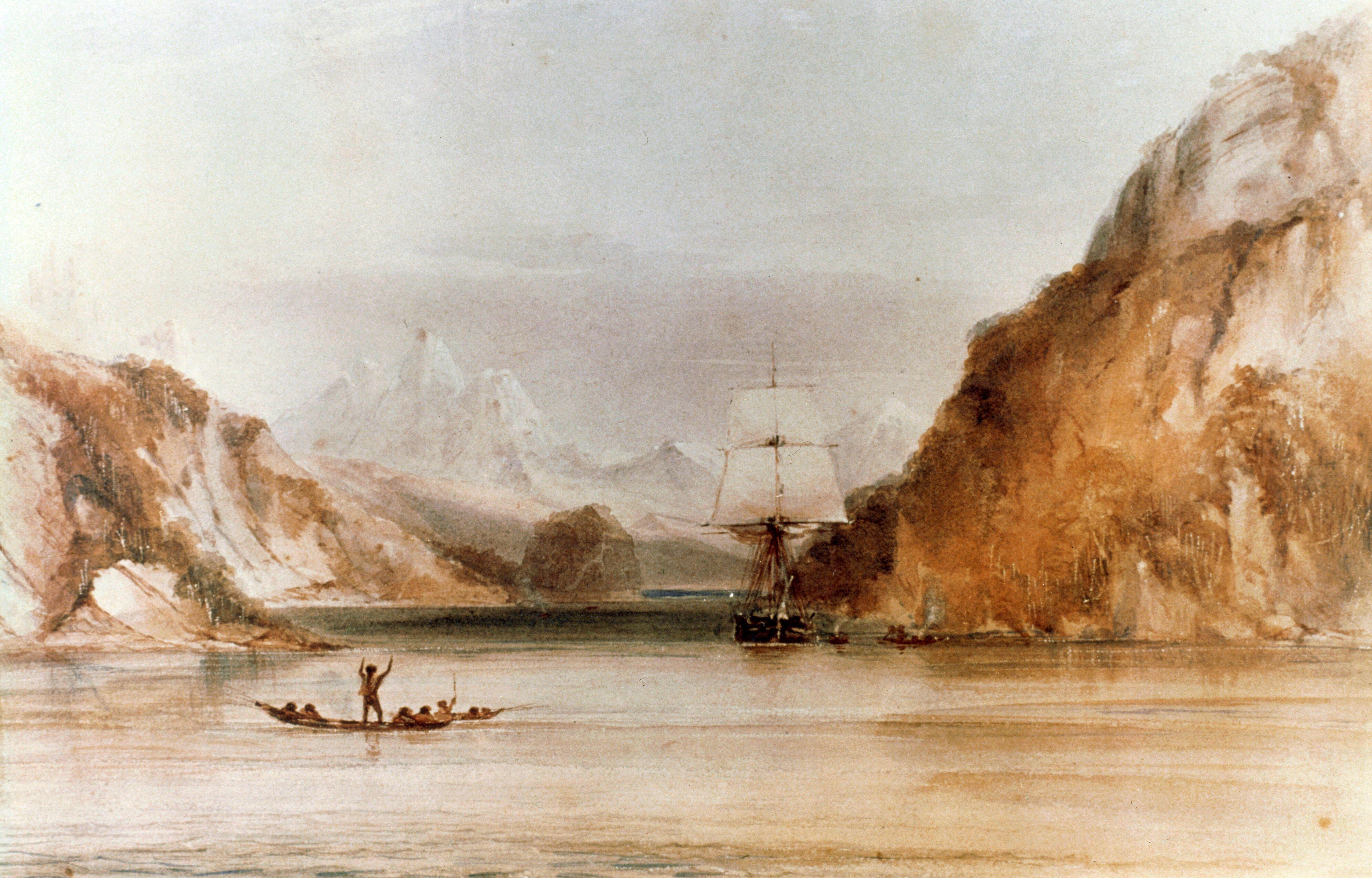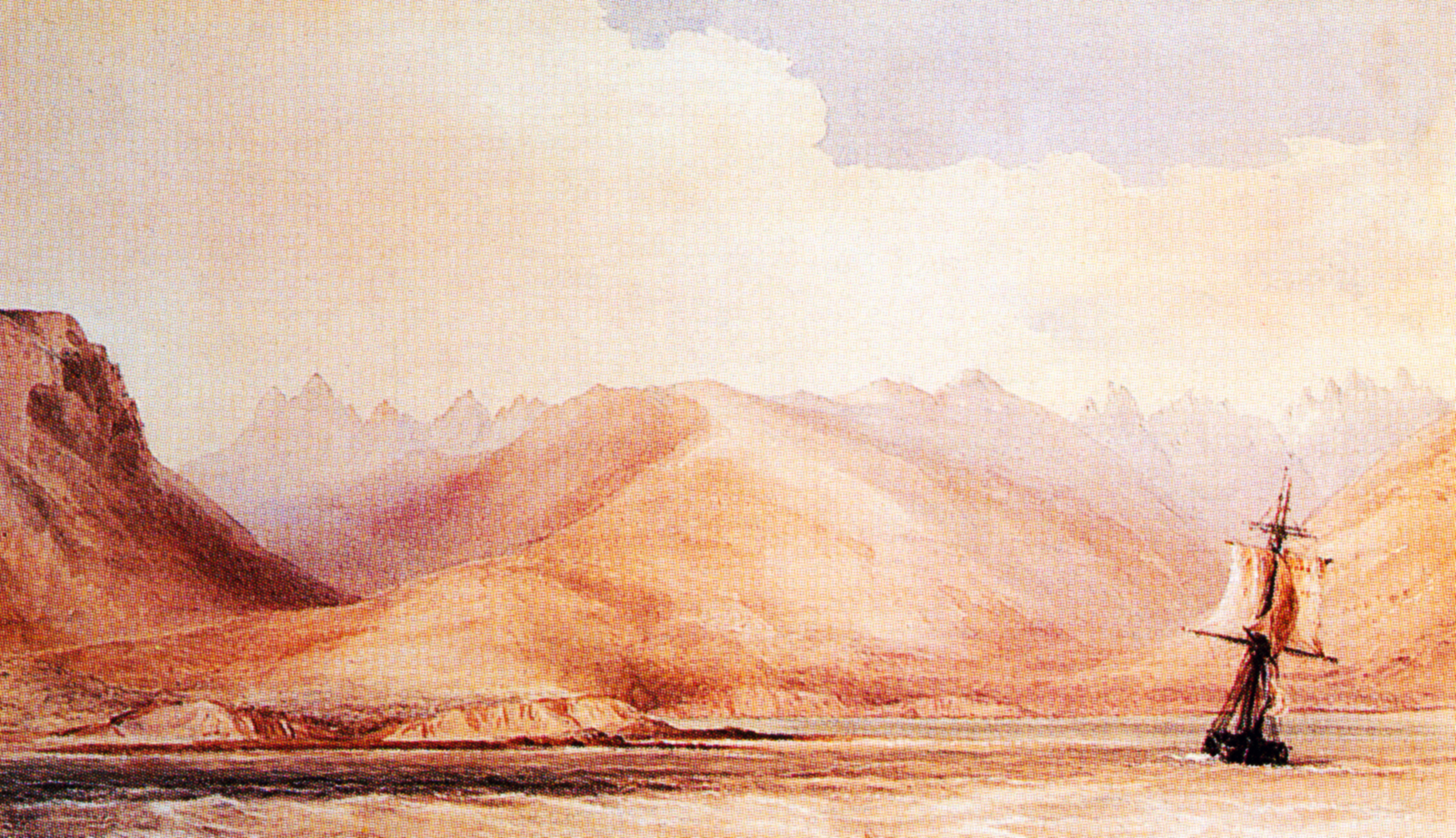‘A stone pounding artist — who exclaims in his sleep, “Think of me standing upon a pinnacle of the Andes — or sketching a Fuegian Glacier!!!”’
When fate handed artist Conrad Martens the chance to join HMS Beagle, he captured the Patagonian flatlands, the shores of Tierra del Fuego and the peaks of the Andes with aplomb.


In August 1833, an English artist roamed the quays of Montevideo, Uruguay, looking for a British ship. Three months earlier, Conrad Martens, the son of a German merchant and his British wife, had boarded HMS Hyacinth in Falmouth, eager to capture the energy of Rio de Janeiro in watercolour. Once he set foot in Brazil, however, a chance encounter with Lt Robert Hammond, fresh off HMS Beagle, overhauled his plans. The officer revealed that the survey expedition’s artist, Augustus Earle, had taken ill, a new one was urgently needed and the ship, then moored in Montevideo, might soon set sail again. Painting Rio could wait.
A wind-blasted, stormy journey took Martens to the capital of Uruguay. Stretching at a foot of the Mount — ‘an ugly lump of ground unbroken by a single bush or even a crag of any size’ — was a city ‘by no means inviting, either at a distance or on closer observation’, where ‘the mud in the roads is too deep to be passable’. At least, Martens did find Beagle well in time and, on November 25, took possession of his cabin. Writing to Charles Darwin, who was on an inland trip when the painter’s services were engaged, Capt Robert FitzRoy described Earle’s successor as ‘a stone pounding artist — who exclaims in his sleep, “think of me standing upon a pinnacle of the Andes — or sketching a Fuegian Glacier!!! ”’. As well as having enthusiasm in spades, Martens was ‘gentleman-like in his habits’, an accomplished landscape artist — and had the right head shape: ‘By my faith in Bumpology [phrenology, of which both the captain and Darwin were proponents], I am sure you will like him, and like him much,’ FitzRoy told the naturalist.

A self portrait by Conrad Martens.
Martens and Darwin did hit it off and, together, they set sail for the deep south of the world. The artist didn’t think much of ‘the flat and sterile shores of Patagonia’, although it’s there that he saw his first flamingo, ‘brilliant in the extreme’ against a small marshy pool. Instead, it was the rugged Tierra del Fuego, embroidered with snow-capped peaks, that stirred his pen and his brush.
Beagle sailed along it twice and he sketched the wood-cloaked shores, the mighty Dogs Jaws gnawing at the sky and Mount Sarmiento, ‘the King of Tierra del’, soaring above sea and shore to pierce the clouds — a scene later engraved by Thomas Landseer. ‘The parts that were level, or only gently inclined and covered with new fallen snow were of a delicate rose colour, while the perpendicular crags… look on all the different shades of a most beautiful blue,’ Martens noted in his diary in June 1834, the second time he sailed past Sarmiento.

Beagle in Ponsonby Sound, as captured by Conrad Martens.
He was equally taken with the indigenous people (albeit with the gaze of a man of his time), drawing them in their wigwams and their canoes. Not everyone was friendly enough to be sketched, however. During an expedition to explore the Rio Santa Cruz, Martens and his fellow voyagers examined nervously the ‘great print of horses feet’ and ‘the trail of the tase, or long spear’ left by a group of Patagonians against whom the government of Buenos Aires was waging war. This, Martens wrote, was ‘a tribe naturally savage and bloodthirsty, now… taught to consider every stranger as an enemy from whome no quarter will be received and consequently none given’. As it turns out, it was much alarm about nothing: the remains of three fires, ‘some fresh well picked bones’, a lot of footprints and a column of smoke was all the artist and his companions ever saw of the fierce warriors.
Darwin, although recording the ‘encounter’ in his own notes, was more interested in the lava cliffs further upriver. Martens duly drew this Basalt Glen, writing in his diary of ‘fine bold crags, round which and above the majestic Condor of the Andes was frequently seen soaring’. As they marched on, he sketched the scavengers preying on dead guanacos, the riflemen — including a frock-coated man who may have been Darwin — looking for whatever could serve as dinner and, towering against the sky, the ‘castles, peaks, and pinnacles’ of the Andes. He entertained hopes to reach their foot, but rations had dwindled and winter was rapidly advancing, so the captain decided to turn back: ‘Our time was expired.’
Not so their adventures, whether a skirmish with Fuegian warriors or the rough seas that forced Beagle to anchor at San Carlos, on the island of Chiloé, to refit. Chiloé’s mosaic of thick forests, ‘luxuriant creepers’ and lighter patches cleared by the ‘exceedingly kind’ islanders exercised Martens’s pencil: he drew the women weaving, the men pushing the plough into the land with their chest and their small cottages, black with smoke.
Exquisite houses, the beauty of Nature, and how to get the most from your life, straight to your inbox.
When Beagle finally made it into Valparaíso in July 1834, the city was true to its name of Paradise Valley, ‘the sky so clear & blue, the air so dry & the sun so bright, that all nature seemed sparkling with life,’ rejoiced Darwin. Martens was intrigued by the quebradas, ‘steep and precipitous ravines… dotted with innumerable cottages’ and accessible only by narrow winding paths. From that vantage point, the mountains across the bay, including the mighty Aconcagua, had ‘a more splendid and magnificent effect’.
From Valparaíso, Beagle would sail along the coasts of Chile and Peru, before heading towards the Galapagos, where she would anchor on September 15, 1835, prompting Darwin to ponder how the islands could have so many similar, yet unique, species, which eventually led to his theory of evolution. By then, however, Martens had long left. The British Admiralty had criticised FitzRoy’s decision to buy Adventure, the schooner that had accompanied Beagle since July 1833 and, with money tight, the captain had to sell her. This, in turn, meant he had to accommodate two crews aboard one vessel: ‘We shall all be very badly off for room,’ wrote Darwin to his sister Caroline, ‘& I shall have trouble enough with stowing my collections… It is necessary also to leave our little painter, Martens, to wander about ye world.’ The parting was perhaps more of a wrench for FitzRoy — who wrote to Capt P. P. King ‘Had I more money, and more storage rooms, I should not think of ending my engagement with him’ — than for Martens, who noted in his diary: ‘Being once more my own master, and now more than ever at liberty to remain here or to go in whatever direction my fancy should lead me.’

Beagle in the Beagle Channel off Tierra del Fuego in 1833, sketched by Conrad Martens.
His fancy led him — after brief stops in Tahiti and New Zealand — to Australia, where he remained for the rest of his life. Yet, that didn’t spell the end of his involvement with Beagle: he was reunited with the crew in 1836, when they arrived to explore the land of kangaroos and both Darwin and FitzRoy bought some of Martens’s expedition watercolours. When they visited him, Martens had already begun painting the vistas that have since seen him crowned as one of the greatest landscape artists from Australia’s colonial period. His professional evolution owed much to his time aboard Beagle, as Australian archivist Michael Organ notes in the preface to his transcription of the painter’s diary: ‘When… Martens arrived in Sydney on 17 April 1835, his ability to select a picturesque view and use watercolour to reproduce the emotive power of nature had improved to such a degree that he was an instant success.’
The artist certainly cherished his memories of the voyage for the rest of his life. As he told Darwin in a letter dated 1862, 28 years after they had sailed together: ‘Well, that was a jolly cruize.’
Carla must be the only Italian that finds the English weather more congenial than her native country’s sunshine. An antique herself, she became Country Life’s Arts & Antiques editor in 2023 having previously covered, as a freelance journalist, heritage, conservation, history and property stories, for which she won a couple of awards. Her musical taste has never evolved past Puccini and she spends most of her time immersed in any century before the 20th.
